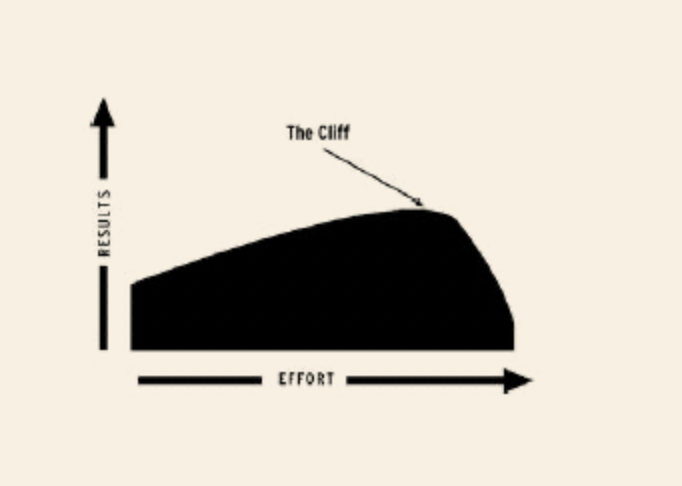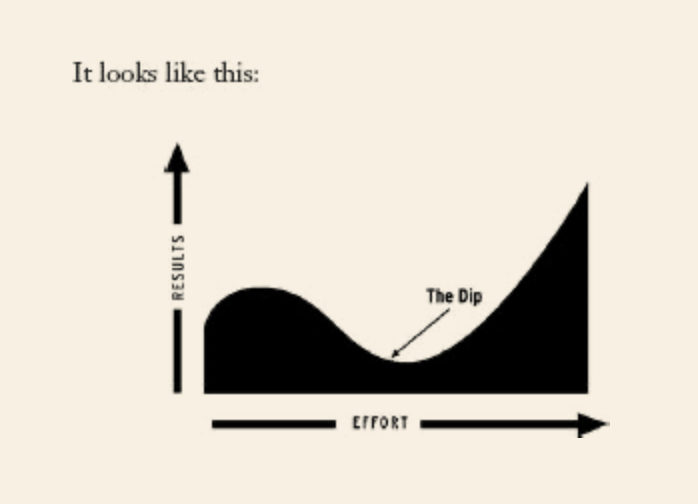When to quit and when not to?
In his book, The Dip, Seth Godin talks about 3 kinds of curves: the dip, the cul-de-sac & the cliff.
The cul-de-sac is the dead end. Things never get better. Today is exactly as yesterday was. The cul-de-sac is linear and it is a busy job. Examples of cul-de-sacs: Dead-end jobs, non-innovative businesses, laundry and other chores, etc.
The cliff is about addiction. As long as you stay on the cliff, each addiction gives you just a little bit higher and leaving the cliff is literally falling off the cliff. That's why smoking is so difficult to quit. Examples of cliffs: Smoking, Alcohol, Netflix, Mindless shopping, Junk food, etc.

The more we stay on the cul-de-sac or the cliff (the addiction), the more difficult it is to get off them. If you are these curves, it makes sense to cut your losses and quit immediately. The more you delay, the worse it gets.
The dip is different. For a long time, each subsequent day might seem worse than the previous one. It might at times seem like we are in a cul-de-sac, especially when we focus on the outcomes. The way to work through the dip is to be effective. We have to be on the hook. There is no progress until we do the work, until we show up.
It doesn't make sense to quit in the dip because you have already done the hard work. But it's important to choose projects where you are committed enough to go through the dip.
Examples of Dips: Entrepreneurship, Writing, Workout, Diet, Relationship building, Reading, Learning, Skill-building, Meditation,

Which curve are you on?
